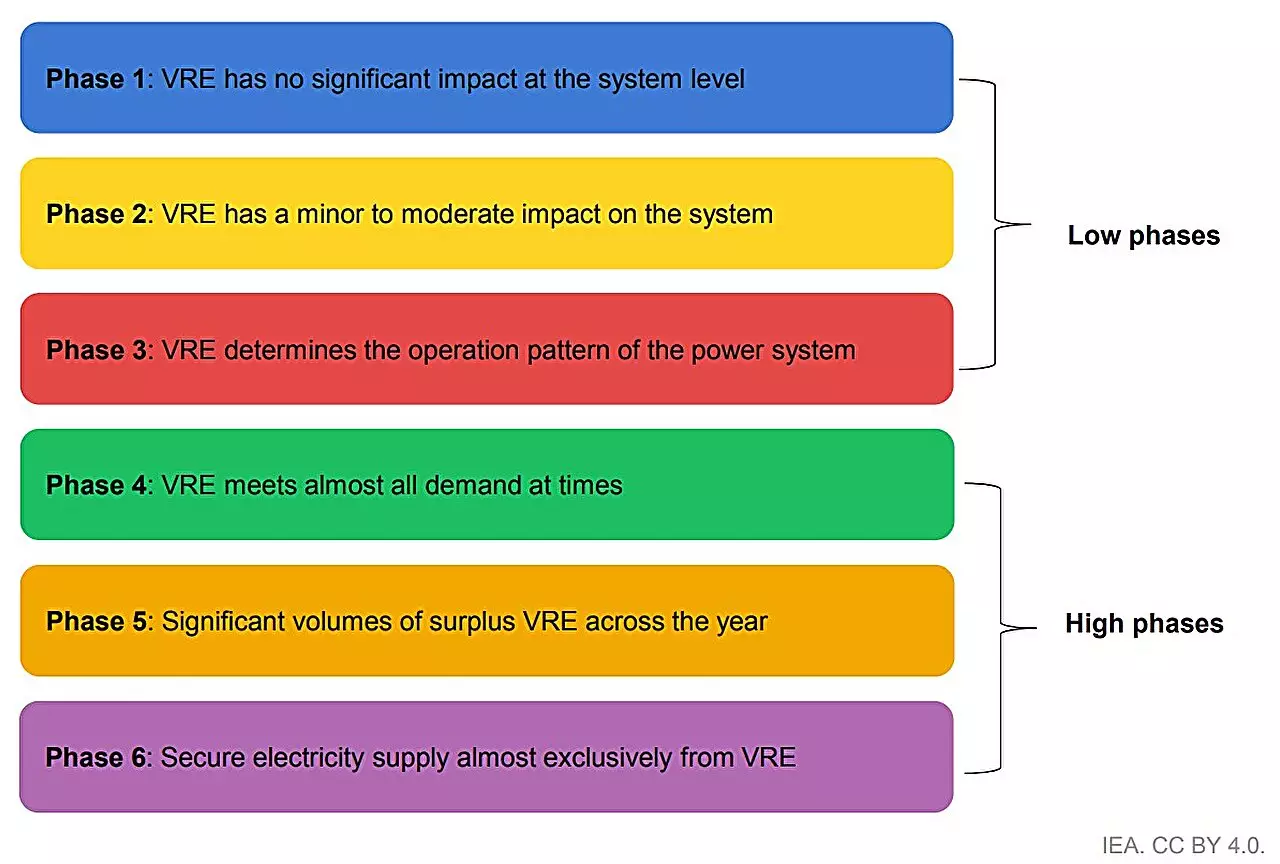The last few years have witnessed an unprecedented surge in the adoption of solar and wind energy across the globe. As nations pursue energy security and a reduction in carbon emissions, the integration of these renewable sources into existing power systems has become more pressing than ever. A recent report from the International Energy Agency (IEA) emphasizes the importance of this integration, highlighting both the opportunities presented by renewable energy and the challenges that lie ahead. This article delves into the crucial findings of the report and explores the necessary steps to ensure a successful transition to a cleaner energy future.
Between 2018 and 2023, the growth of solar photovoltaic (PV) and wind capacity has more than doubled globally. This remarkable escalation has significantly altered the electricity generation landscape, with these renewable sources accounting for a substantial portion of the energy mix. The growth trajectory is bolstered by favorable government policies and declining costs associated with renewable technologies. Projections indicate that this upward trend is expected to continue toward 2030, underscoring the need for efficient integration into power systems to avoid hindering their potential benefits.
The IEA report underscores the pivotal role that solar PV and wind play in global decarbonization efforts. As these technologies are projected to account for two-thirds of the reductions in carbon dioxide emissions necessary to achieve net-zero targets by mid-century, ensuring their smooth integration into power systems is not merely an operational challenge but a strategic necessity.
The report outlines that delays in implementing measures aimed at integrating these variable renewable energy (VRE) sources could lead to a significant shortfall in their effectiveness. Projections suggest that without sufficiently supporting integration, electricity generation from solar PV and wind could be 15% lower by 2030, which would also reduce their share in the global electricity mix by five percentage points.
IEA Director of Energy Markets and Security, Keisuke Sadamori, highlighted the remarkable growth of renewable resources while voicing concern. Without stronger integration efforts, countries may miss out on maximizing the benefits of their renewable investments. Hence, advancing integration measures becomes pivotal not only for energy security but also for achieving climate objectives.
A significant portion of the IEA report is dedicated to a first-of-its-kind analysis of integration measures across 50 power systems, which encapsulate nearly 90% of the current global generation from solar PV and wind. This comprehensive stocktake revealed that the transitioning economies, particularly those with lower current shares of variable renewables, have demonstrable opportunities for growth without entirely overhauling their existing frameworks.
Well-established strategies—like enhancing the flexibility of existing assets and improving forecasting abilities—can make considerable contributions towards integration. Nevertheless, the complexity of the challenge often escalates at higher levels of renewable penetration. The report highlights that trailblazers in renewable integration—nations such as Denmark, Ireland, South Australia, and Spain—serve as beacons for others grappling with similar challenges, demonstrating successful practices and innovative solutions.
Furthermore, the development of energy storage systems and advanced power grid technologies is gaining traction, playing a vital role in addressing variability in solar and wind output. With most technological solutions already available or nearing maturity, the primary barrier is often not technological but rather political and regulatory imperatives that can drive their successful implementation within power systems.
Rethinking Power System Operations
Incorporating larger shares of variable renewables into power systems necessitates a fundamental re-evaluation of traditional planning and operational methodologies. Aware of the impending shifts in the energy landscape, governments and utilities must adopt proactive measures globally. This may involve enhancing grid infrastructures and implementing robust policies that foster innovation in energy management.
As countries continue to embrace renewable sources, an integrated approach that contemplates the intricacies of renewable energy technologies, regulatory frameworks, and market dynamics will be essential in navigating the path to a sustainable and secure energy future.
The integration of solar PV and wind energy into power systems presents both challenges and extraordinary opportunities. The IEA report serves as a clarion call for policymakers to recognize the urgency of effective integration strategies. As nations pivot toward renewable energy, the success of these transitions will hinge on our collective ability to adapt, innovate, and legislate for a future powered by clean energy. The time to act is now, and the gains to be realized can redefine the potential of the global energy landscape for generations to come.


Leave a Reply